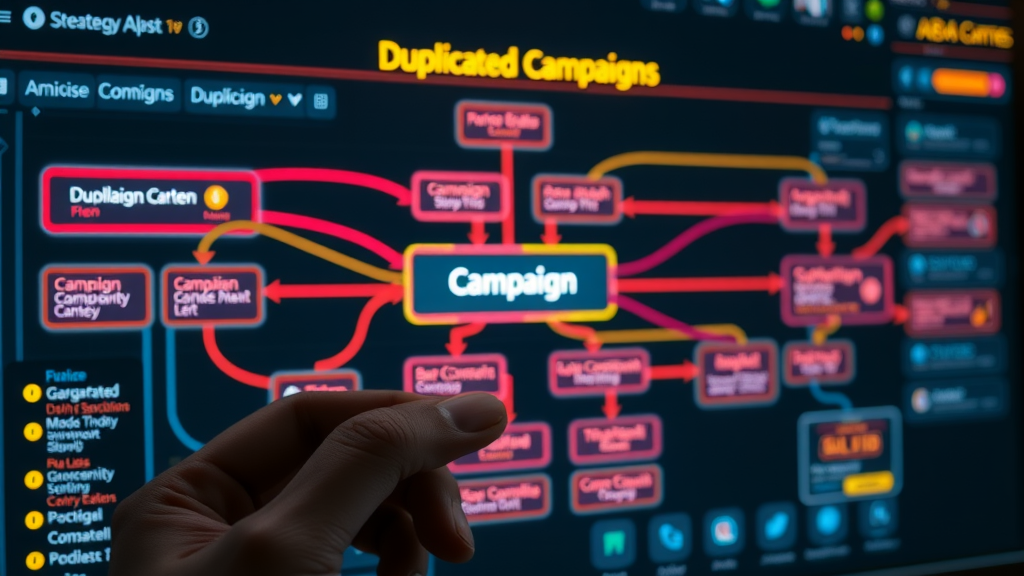
Did you know that businesses using automated lead nurturing see up to 50% more sales-ready leads at 33% lower cost? This startling fact shows that effective nurturing automation isn't just a tech trend—it’s a game-changer for any business wanting to turn prospects into loyal customers. If you’re looking to supercharge your lead nurturing strategy , accelerate your sales cycle, and empower your sales team, automated lead nurturing is your competitive edge. In this guide, you’ll uncover exactly how to design and execute nurturing campaigns that deliver explosive growth and fuel lasting revenue.
- Why automated lead nurturing ignites growth and profitability
- How automation transforms every stage of the modern sales funnel
- Step-by-step strategies for crafting unstoppable nurturing campaigns
- Expert insights, best practices, and real-world examples to drive your success
Unlock Explosive Growth: How Automated Lead Nurturing Drives Revenue Faster
- Did you know that businesses using automated lead nurturing see up to 50% more sales-ready leads at 33% lower cost? This unconventional fact highlights why automated lead nurturing is not just a trend, but a necessity for successful lead conversion.
Automated lead nurturing is rapidly becoming an essential pillar of high-performing sales and marketing strategies. Why? Because it aligns with how modern buyers want to connect—delivering relevant content and timely touchpoints so that prospects naturally move toward choosing your product or service. Unlike manual nurturing efforts that can miss opportunities or introduce delays, nurturing automation gives you the power to respond instantly and consistently. For businesses looking to shorten the sales cycle and lower the cost of customer acquisition, this approach is irreplaceable.
Moreover, automated lead nurturing ensures that no promising opportunity falls through the cracks. With intelligent workflows, lead scoring, and multi-channel campaigns, you always stay top-of-mind and ahead of your competition. When implemented correctly, automated lead nurturing doesn’t just fill your pipeline—it transforms your entire revenue engine. Let’s explore exactly how nurturing automation reshapes today’s sales funnel from start to finish.
How Automated Lead Nurturing Transforms the Modern Sales Cycle

Understanding Automated Lead Nurturing in the Evolving Marketing Automation Landscape
In today’s fast-paced digital market, automated lead nurturing leverages powerful marketing automation to manage, track, and accelerate the buyer journey from first contact to closed deal. With advanced nurturing automation, companies can send tailored messages based on a lead’s behavior and position within the sales funnel. This allows marketing and sales teams to nurture leads with relevant content at scale, turning cold prospects into enthusiastic buyers without a heavy lift from sales reps.
The evolution of marketing automation tools means that personal touches don’t get lost, even as you scale your nurturing campaigns. Personalized drip emails, targeted social media engagement, and dynamic lead scoring let you segment your audience efficiently and focus your energy where it matters most. By building a data-driven, integrated lead nurturing strategy, your marketing team can automate your lead management, giving your sales team more time to engage at the decisive moments.
Ultimately, automated lead nurturing redefines what’s possible in the sales cycle. Instead of reactive one-off communications, companies now engage prospects with highly intentional multi-touchpoint nurturing campaigns. This seamless blend of lead nurturing automation and human insight ensures your brand remains top of mind—and top of inbox—all the way to a successful close.
Core Components of a Powerful Lead Nurturing Strategy
- Personalized email workflows
- Lead scoring
- Nurturing campaigns
- Marketing automation platforms
- Social media engagement
- Conversion rate optimization
A robust lead nurturing strategy is the foundation of successful automation. At its core, nurturing leads means more than sending a few emails; it’s about systematically advancing prospects through each stage of your sales funnel with personalized, highly-relevant interactions. This starts with intelligent workflows, which enable marketers to deliver the right message, at the right time, through the ideal channel.
Combining lead scoring with compelling nurturing campaigns ensures that the hottest prospects always get priority attention—letting your sales team focus where it counts most. Meanwhile, leveraging cutting-edge marketing automation platforms empowers seamless integration across social media, email marketing, and even SMS, expanding your nurturing efforts beyond the inbox. When you use these tools to optimize for conversion rates, your nurturing strategy will turn potential into profit.
Crafting Effective Nurturing Automation: From Buyer Persona to Nurture Leads
Building Accurate Buyer Personas for Automated Lead Nurturing Success
- Gather data from CRM
- Segment your audience
- Define common objections and preferences
- Create messaging personas

The secret to successful lead nurturing is alignment with your ideal customer’s needs, pain points, and buying triggers. Start by gathering detailed data from your CRM—past purchases, engagement history, demographics, and more. Segment these insights to group leads by behavior or industry, creating a crystal-clear picture of distinct audience types.
Next, outline the most common objections and preferences for each segment. What keeps them up at night? Which features make life easier for them? Use those insights to craft concrete buyer personas —fictional but representative profiles of your perfect customers. Building detailed messaging personas ensures your nurturing campaigns speak directly to real-world needs, massively increasing your odds of guiding leads through the sales cycle.
Ultimately, accurate personas let you personalize every nurturing touchpoint, whether it’s a triggered email, a targeted post on social media, or a dynamic CTA. The more relevant your messaging, the more your nurturing automation effort feels like a natural, helpful extension of your product or service.
How Nurturing Automation Powers a Consistent Lead Nurturing Campaign
"Relevant, timely content delivered via nurturing automation can increase conversion rates by 20%." – MarketingProfs Study
Nurturing automation introduces a new level of consistency to all your lead nurturing campaigns. By automating repetitive tasks and decision-making logic, it guarantees rapid follow-up and engagement—removing bottlenecks and human error.
This consistency is key for building trust. When leads know they can expect a regular cadence of helpful, value-driven content, your brand earns credibility that makes their purchasing decision easier. Whether you’re sending targeted email marketing, deploying social content, or triggering SMS reminders, automation keeps the conversation going, nurturing leads throughout every stage of the funnel.
Moreover, the ability to track and analyze every touchpoint means each nurturing campaign becomes smarter over time. From A/B testing content to refining workflows based on conversion rate data, automation fuels your ability to optimize without burnout or overload. The end result? Faster movement down the sales funnel and much higher ROI on every dollar spent.
Building High-Performance Lead Nurturing Campaigns Using Marketing Automation
Blueprint for a Successful Lead Nurturing Campaign
- Defining goals
- Aligning sales and marketing teams
- Mapping content to the sales cycle
- Tracking conversion rates

A high-performing nurturing campaign requires careful planning and seamless collaboration across your marketing and sales teams. Start by setting quantifiable goals: Are you aiming for more qualified leads, shorter sales cycles, or a specific boost in conversion rates? Make these priorities explicit—every member of your team should be working toward a unified outcome.
Next, ensure complete alignment between your sales and marketing departments. Share dashboards, action plans, and pipeline insights to keep everyone on the same page. Map your content to each buyer stage in the sales cycle, focusing on pain point–driven resources and sales enablement materials. As leads progress, use data from your marketing automation platform to personalize messaging and optimize for micro-conversions.
Finally, implement robust tracking. Conversion rate metrics, sales funnel progression, and lead scoring analytics will show you which nurturing campaigns are hitting the mark. Use these insights to refine your approach—because in today’s market, flexibility is just as valuable as automation.
Utilizing Social Media and Multi-Channel Nurturing Strategies

To maximize your lead nurturing impact, expand beyond traditional email and embrace multi-channel automation. Social media platforms are powerful tools for capturing leads—serving not just as discovery channels, but as high-engagement touchpoints throughout the nurturing process. Schedule targeted posts, use DMs to answer questions, and retarget website visitors with tailored social ads.
Integrated marketing automation platforms can connect these social interactions to broader workflows—seamlessly pivoting a lead from a LinkedIn message to a nurturing email to a retargeting ad. This multi-channel approach keeps your brand front and center while offering prospects multiple ways to interact and respond. The result? Stronger engagement, higher conversion rates, and a nurturing campaign that never misses a beat.
Experiment with SMS, push notifications, and even direct mail as part of your nurturing automation. The key is consistency and personalization, ensuring every lead receives the right message, at the right time, on the right platform—ultimately moving them closer to a successful close.
Lead Scoring: Prioritizing Prospects in Marketing Automation
Lead scoring is a core function in any effective nurturing automation system. By assigning values to leads based on behaviors such as website visits, content downloads, email opens, and form submissions, you can prioritize which prospects are closest to a sale. This enables your sales team and nurturing campaign workflows to focus on the leads with the highest conversion potential.
Sophisticated lead scoring models also factor in demographic or firmographic data (such as company size, job title, or industry) to ensure your efforts target the most lucrative opportunities. By connecting your CRM and marketing automation software, you gain an end-to-end view of every interaction—flagging leads that are ready for direct engagement by a sales rep and routing colder prospects into further nurturing campaigns.
Properly calibrated lead scoring improves the efficiency of both marketing and sales teams. It shortens the sales cycle, reduces wasted effort, and boosts your overall conversion rates—turning lead generation from a numbers game into a highly-strategic process that consistently delivers results.
Optimizing Automated Lead Nurturing for Conversion Rate Success
Analyzing Lead Nurturing Campaign Performance Metrics
| Key Metric | Description |
|---|---|
| Open rates | Percentage of leads opening nurturing emails or SMS messages |
| Response rates | How often leads engage (click, reply, share) with campaign content |
| Conversion rates | Ratio of prospects becoming sales-ready leads or customers |
| Sales cycle length | Average time from first contact to closed deal |
| Lead quality score | Aggregated lead scoring to determine top opportunities |
Measurement is the backbone of any successful lead nurturing strategy. Start by tracking open and response rates to gauge top-of-funnel engagement. Are your prospects reading your emails but failing to click? Are social messages sparking meaningful conversations? Delve into these metrics using your marketing automation dashboard.
For deeper insights, closely monitor conversion rates and sales cycle length. These KPIs reveal exactly how your nurturing campaigns accelerate decision-making and remove bottlenecks. Finally, lead quality score quantifies which prospects are most likely to become buyers, letting you shift resources and refine your nurturing automation for peak efficiency.
Armed with accurate performance data, you can iterate and improve continuously. Set weekly or monthly benchmarks, test new content formats, and fine-tune segmentation rules to make every nurturing campaign more impactful than the last.
A/B Testing and Continuous Improvement for Nurturing Automation

To keep your nurturing campaigns sharp and effective, embrace A/B testing as a core best practice. By systematically experimenting with different subject lines, CTAs, email copy, or timing, you can identify what resonates most with each audience segment—then automate your lead nurturing to replicate those successes on a larger scale.
Continuous improvement doesn’t stop at content. Test workflows, triggered events, or even which channels are most effective at different sales cycle stages. Marketing automation platforms make it easy to capture this data, analyze performance, and deploy winning variations with just a few clicks.
Remember: The most successful nurturing strategies are never static. Always be optimizing, learning from small changes, and scaling what works. The reward? Campaigns that keep your sales funnel full of conversion-ready prospects year-round.
Scaling Marketing Automation: From Single Nurturing Campaign to Predictable Revenue
Replicating Success Across Multiple Lead Nurturing Campaigns

Once you’ve optimized a single nurturing campaign, the next step is scaling your approach to drive predictable, sustainable revenue. Use insights from your best-performing campaigns to template workflows, messaging strategies, and segmentation rules. Most marketing automation platforms offer cloning or duplication features—making it easy to adapt winning systems to new products, markets, or verticals.
Keep all teams focused by maintaining robust documentation. Build libraries of email templates, buyer personas, and content calendars so that every new campaign launches from a proven playbook. This systematic approach to scaling ensures that the benefits of automation—speed, consistency, and efficiency—are multiplied as your business grows.
Moreover, as you expand, always prioritize ongoing analysis. New audiences may have unique pain points, requiring regular tweaks to your lead scoring, nurture campaigns, and content strategies. By staying agile, you ensure every automation investment delivers maximum return.
Role of the Marketing Team in Maintaining Automated Lead Nurturing
"Automate your lead nurturing, so your sales team can focus on the closes." – Industry Expert
Your marketing team is the engine behind every successful lead nurturing automation initiative. It’s their job to monitor campaign performance, create and test new content, and ensure seamless integration with your CRM and sales team. Frequent cross-department meetings help bridge any gaps, aligning goals and messaging for each stage of the sales cycle.
Continuous training is equally vital. As marketing automation tools evolve, keep your teams up to date with platform features, customer insights, and best practices. This ensures campaigns stay fresh, relevant, and fully optimized to nurture leads through every channel and touchpoint.
Ultimately, when your marketing team steers nurturing automation, your sales team spends less time chasing cold leads and more time closing qualified deals—unlocking faster cycles, better conversion rates, and higher revenue across the board.
People Also Ask: Your Top Automated Lead Nurturing Questions Answered

What is automated lead nurturing?
Automated lead nurturing refers to the use of marketing automation platforms and intelligent workflows to engage prospects at every stage of the sales cycle. Instead of relying on manual follow-up, nurturing automation delivers timely, tailored messages to leads—helping them move steadily toward a purchase. It’s a smarter, scalable way to guide prospects through your sales funnel and convert them into buyers, all with less human effort.
What is an example of a lead nurturing strategy?
A classic lead nurturing strategy could involve sending a series of personalized emails triggered by a prospect’s actions, such as downloading a whitepaper. These emails provide helpful resources that address specific pain points, share case studies, and invite the lead to attend a demo. At every stage, the messages are designed to add value, overcome objections, and position your product or service as the ideal solution—driving the recipient closer to a sales conversation.
Can lead generation be automated?
Yes, lead generation (lead gen) can be automated using advanced tools for landing pages, content downloads, social media ads, and chatbots. Automation doesn’t stop at acquiring new leads; it’s the first step in a holistic system that captures, scores, and nurtures prospects from their first interaction all the way to becoming loyal customers.
What is a nurturing lead?
A nurturing lead is a prospect who isn’t ready to buy yet but shows potential with further engagement. Through lead nurturing efforts , marketers deliver relevant content, answer objections, and build trust over time—transforming these prospects into sales-ready leads that are eager to take the next step. Nurturing enables you to stay connected and provide value, even when the timing isn’t right for an immediate sale.
Common Challenges in Automated Lead Nurturing and How to Overcome Them
Avoiding Pitfalls: Data Quality and Lead Nurturing Automation Errors
- Dirty data
- Over-automation
- Lack of personalization
- Message fatigue
- Misaligned sales-marketing communication

Even the most advanced nurturing automation system can falter if it’s built on bad data. Incomplete or incorrect CRM records (dirty data) cause misfires—wrong messages sent to the wrong leads, or valuable prospects overlooked entirely. Over-automation can create another risk, as too many touchpoints lead to message fatigue or make your efforts feel robotic and impersonal.
To maximize the efficiency of your nurturing campaigns, prioritize data hygiene and regular audits. Strike a balance between automation and personalization by keeping content highly relevant and tailoring your approach for each segment. Finally, facilitate open, ongoing communication between your sales and marketing teams to ensure your nurturing automation reflects real-world buyer behavior and pain points.
Real Solutions to Automate Your Lead Nurturing Strategy Effectively
To safeguard your automation efforts, implement strict data entry protocols and schedule routine CRM cleanups. Take advantage of AI-powered automation features that adapt content based on real-time engagement signals. Encourage feedback loops between sales reps and marketing so you’re always refining buyer personas, adjusting nurturing workflow triggers, and uncovering new pain points and opportunities.
Keep campaigns fresh by rotating content formats and optimizing for the latest buyer behaviors. Test new channels, segment audiences more granularly, and never lose focus on the end goal—creating valuable user experiences that naturally drive prospects to act. When you automate your lead nurturing strategy with this level of care, sustainable growth and higher ROI will follow.
Industry Benchmarks and Success Stories in Automated Lead Nurturing
| Benchmark | Average Result |
|---|---|
| Average touchpoints before conversion | 7-10 |
| Average time to conversion | 30-90 days |
| Engagement rate | 15-25% |
| Automation adoption by sector | 65% (B2B), 44% (B2C) |
Case Study: Achieving Predictable Revenue with Lead Nurturing Automation

"Marketing automation and nurturing automation turned our pipeline from dry to overflowing in just six months." – SaaS Company CEO
Consider the story of a top SaaS provider that struggled with a leaky pipeline and unpredictable close rates. By adopting an automated lead nurturing strategy , segmenting audiences, and rolling out score-based nurturing campaigns, they saw a 50% increase in sales-ready leads and cut their average sales cycle length by nearly 30%. With ongoing A/B testing and multi-channel automation, their marketing and sales teams now enjoy scalable, repeatable revenue growth—proof that with the right nurturing efforts, any company can achieve predictable results.
These industry benchmarks and case studies highlight one powerful point: When you combine data-driven automation with informed, creative nurturing campaigns, the sky’s the limit for your sales and marketing outcomes.
Best Practices for Automated Lead Nurturing Campaign Optimization
- Map the buyer journey
- Segment leads
- Test content
- Use multi-channel marketing
- Align sales and marketing teams
- Monitor KPIs
Success with automated lead nurturing is the result of relentless optimization and cross-team alignment. Start by mapping the entire buyer journey—from anonymous visitor, to nurtured lead, to loyal customer. Segment your leads using behavioral and demographic data to maximize personalization.
Test every aspect of your campaigns, from messaging tone to image placements and channel mix. Be bold in trying new content types and formats—podcasts, video Q&As, or interactive guides can dramatically boost engagement and conversion rates. Above all, keep sales and marketing teams connected, sharing insights on what’s working so you can pivot quickly as buyer behaviors change.
Finally, monitor KPIs closely. Use dashboards to catch trends early and respond before challenges become obstacles. With disciplined execution and a flexible mindset, your nurturing campaigns will always be one step ahead.
Adapting Nurturing Campaigns for Changing Buyer Behaviors
The digital marketplace evolves rapidly—so must your lead nurturing campaign . As buyer expectations shift toward more immediate, personalized experiences, automation tools let you adapt in real time. Monitor engagement patterns, survey your audience for feedback, and stay informed on industry trends so your nurturing campaigns deliver value at every turn.
Integrate new technologies and channels as they become available, always balancing automation with the human touch. When you treat every campaign as a dynamic, living system, you ensure resilience and relevance—no matter what changes await.
FAQs: Key Insights About Automated Lead Nurturing
- How does lead scoring improve nurturing automation? Lead scoring helps you prioritize the most engaged and relevant prospects, ensuring your nurturing automation sends the right content to the right leads—maximizing your conversion rate and sales team efficiency.
- What tools are best for automated lead nurturing campaigns? Top tools include HubSpot, Marketo, Pardot, and ActiveCampaign—each offering workflow automation, integration with CRM, lead scoring, and multi-channel campaign management.
- How can small marketing teams succeed with automated lead nurturing? Start small, focus on a few high-probability workflows, and leverage pre-built templates within your marketing automation platform. Collaborate closely with sales reps and monitor results for ongoing improvement.
- What KPIs should I track to measure automated lead nurturing success? Track open rates, conversion rates, lead scoring changes, sales cycle length, and content engagement to fine-tune your campaigns and prove ROI.
Five Key Takeaways for Automated Lead Nurturing Mastery
- Personalized, timely communication is central to automated lead nurturing.
- Integrate your marketing team and tools for a seamless nurturing strategy.
- Continuous optimization through A/B testing enhances campaign performance.
- Data-driven nurturing automation boosts conversion rates and accelerates the sales cycle.
- Adapting your lead nurturing campaigns to buyer behavior yields higher ROI.
Empower Your Business: Implement Automated Lead Nurturing for Lasting Growth
- Begin your journey toward fully automated lead nurturing. Analyze your processes, choose the right marketing automation tools, and start turning prospects into buyers today.
Actionable Step: Audit your current nurturing campaigns, implement a top marketing automation tool, and commit to continuous optimization—because tomorrow’s revenue depends on today’s nurturing efforts.
 Add Row
Add Row  Add
Add 




Write A Comment